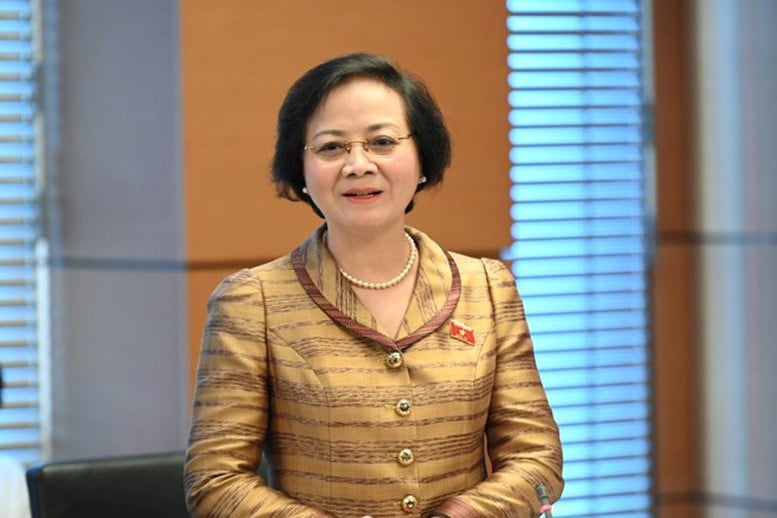
Minister of Home Affairs Pham Thi Thanh Tra speaks at the discussion at group 5 (including National Assembly delegates from Binh Duong, Quang Nam, and Yen Bai provinces)
Continuing the 9th Session, on the afternoon of May 7, the National Assembly discussed in groups the Draft Resolution of the National Assembly amending and supplementing a number of articles of the 2013 Constitution; the draft Law on Organization of Local Government (amended); and the draft Law on Cadres and Civil Servants (amended).
Speaking at the discussion session of group 5, clarifying the draft Law on Organization of Local Government (amended), Minister of Home Affairs Pham Thi Thanh Tra said that the Law on Organization of Local Government was only amended last February, but at that time, the issue of building a two-level government model was not raised.
Based on the policies of competent authorities, the Ministry of Home Affairs continues to perfect the draft law in the direction of innovative thinking, substantial reform of the local government apparatus and public service activities.
"This time, the Drafting Committee decided to comprehensively and fundamentally amend the bill with a philosophy of reform, innovation, progress and development," the Minister emphasized.
According to the Minister of Home Affairs, this is a time of very high demands on national governance, building a modern, streamlined, effective, efficient, close-to-the-people, people-serving government model, and at the same time aiming at the goal of reforming the civil service.
One of the core contents of the bill is the establishment of a two-level local government organization model: provincial level (province, centrally-run city) and communal level (commune, ward, special zone), replacing the current three-level model. In which, special zones will focus mainly on 13 island districts.
The Minister cited the direction in Resolution 60 of the Central Executive Committee and Conclusion 137 of the Politburo , which required building a streamlined, efficient, effective, and effective government apparatus model that meets the requirements of being close to the people and serving the people better.
“This model is both universal and applied by many advanced countries, and is suitable for the specific characteristics of local government organization in Vietnam,” said the Minister.
The second key content is the specific demarcation of authority, tasks, and powers of each level of local government in the direction of decentralization and thorough decentralization of the activities of two-level local governments.
In which, almost all tasks and powers of the current district level will be transferred to the new commune level, at the same time, tasks and powers will continue to be decentralized from the provincial level to the commune level.
“It can be said that the tasks of the new commune level are currently very heavy. After reviewing, 90/99 tasks and powers of the district-level local government will be transferred to the commune level, the remaining 9 tasks and powers of the district level will be transferred to the provincial level when organizing a 2-level local government model, eliminating the district level,” said the Minister.
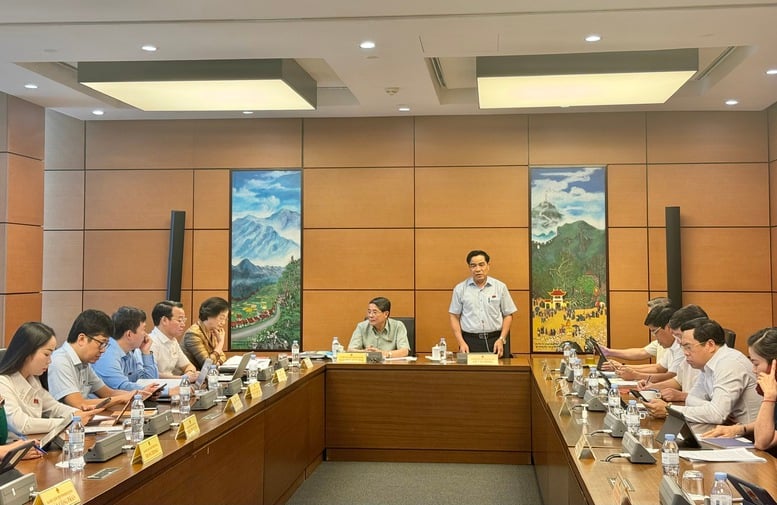
National Assembly deputies discuss in group 5 - Photo: VGP/Thu Giang
The third content is to thoroughly perfect the principles of decentralization, delegation of authority and delegation of authority. This issue was thoroughly understood in the law amendment in February, and is now being deepened and thoroughly implemented.
According to the Minister, the complexities and overlaps need to be rearranged and reorganized. Currently, there are 152 tasks of the Prime Minister stipulated in 286 specialized laws and 143 specialized laws stipulating the authority of the Minister. In addition, there are 170/186 specialized laws regulating the functions and tasks of the People's Council at the district level.
According to the Minister, immediately after the National Assembly passes the Law on Organization of Local Government, the Government will issue about 25 decrees on decentralization, delegation of power, and assignment of authority.
After the National Assembly passes the Law on Organization of Local Government (amended), the Government will simultaneously issue about 25 decrees on decentralization, delegation of power and determination of operational authority of two-level local governments.
The fourth important content is to remove difficulties and obstacles when switching from a 3-level to a 2-level government model. The bill has 9 transitional contents to comprehensively resolve situations arising during the process of reorganizing the apparatus.
Regarding the method of handling arising issues, it is the method of legislative delegation. Accordingly, the National Assembly delegates the authority to the Government so that the Government can issue decrees to implement this, but after 2 years, all relevant laws must be comprehensively revised.
“This is a revolution, a breakthrough thinking of the National Assembly in delegating legislative power. This is also international practice, many countries handle issues like this to remove bottlenecks, promoting national development,” Ms. Tra added.
Will submit project to classify administrative units
Regarding concerns of some National Assembly deputies about the classification of administrative units when implementing the 2-level local government model, the Minister said that the Ministry will prepare a project and report to the Government to submit to the National Assembly Standing Committee on standards and criteria for classifying administrative units.
For the provincial and centrally-run city levels, it is expected that there will be criteria for classifying urban areas and provincial administrative units into types 1, 2, and 3 in accordance with socio-economic development conditions. Communes, wards, and special zones will also be classified as urban or rural areas, to facilitate local governance and development.
Thu Giang
Source: https://baochinhphu.vn/chinh-quyen-dia-phuong-2-cap-se-chuyen-90-99-nhiem-vu-tu-huyen-xuong-xa-102250507182737922.htm



![[Photo] Prime Minister Pham Minh Chinh receives leaders of Excelerate Energy Group](https://vphoto.vietnam.vn/thumb/1200x675/vietnam/resource/IMAGE/2025/5/29/c1fbe073230443d0a5aae0bc264d07fe)

![[Photo] Prime Minister Pham Minh Chinh attends the event "Digital transformation of the banking industry by 2025"](https://vphoto.vietnam.vn/thumb/1200x675/vietnam/resource/IMAGE/2025/5/29/0e34cc7261d74e26b7f87cadff763eae)










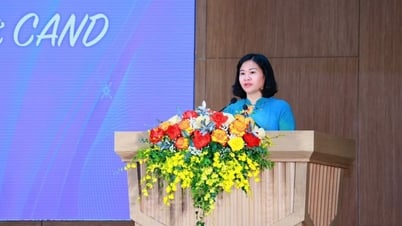








































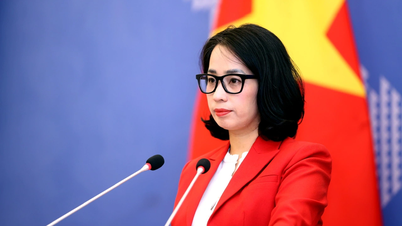








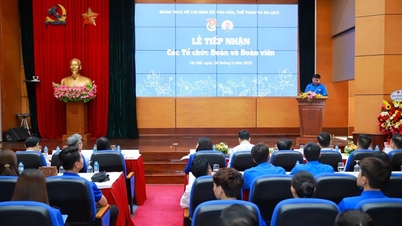






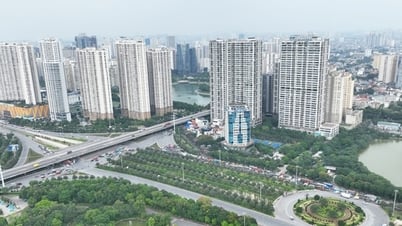











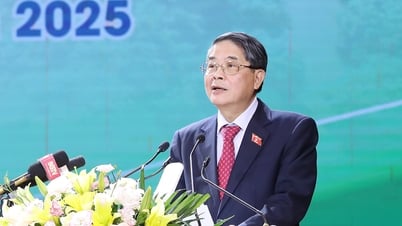











Comment (0)